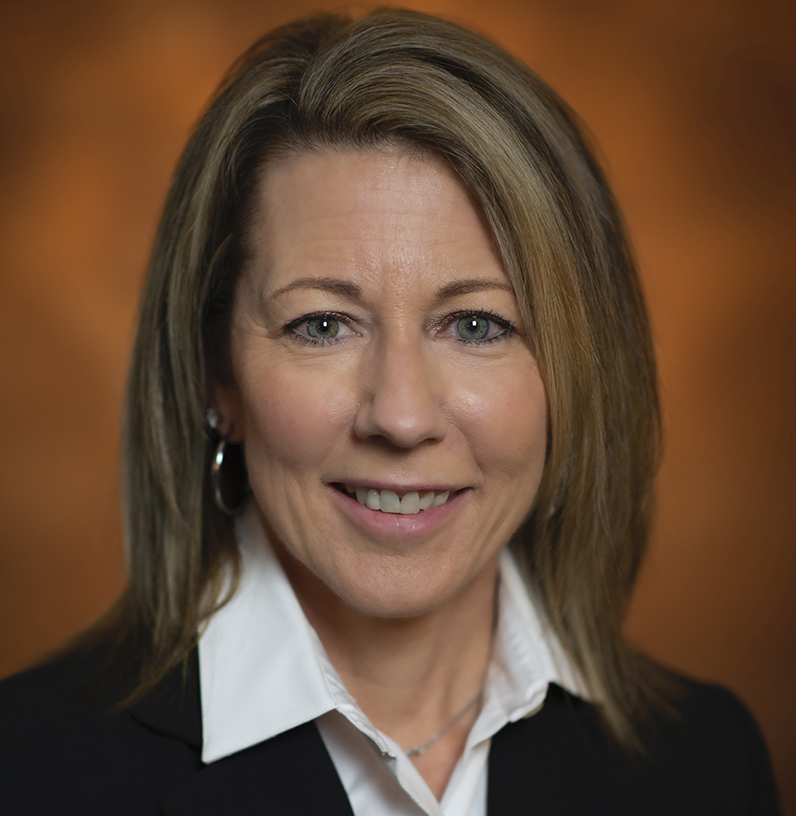Barbara Jacobsmeyer as of July 1 became the first CEO of Enhabit Home Health and Hospice (NYSE: EHAB) as an independent, standalone company.
Enhabit emerged from the spinoff of Encompass Health’s (NYSE: EHC) home health and hospice segment, which completed in July. The new company expects to earn nearly $1.08 billion to $1.12 billion this year, with an adjusted EBITDA of $197 million, according to a previous Encompass Health earnings call.
As of day one in operation, Enhabit employs about 10,000 workers and operates close to 350 locations in 34 states. About 95 of those locations are hospices, seeing about 13,200 patients annually.
Jacobsmeyer joined Encompass in 2007 as central region president. At the time, Encompass Health was known as HealthSouth. She has also served as CEO of the Rehabilitation Hospital of St. Louis and chief operating officer of Des Peres Hospital.
Hospice News sat down with Jacobsmeyer to talk about her plans and priorities for the nation’s newest, publicly traded, national company to offer hospice care.
 Enhabit
EnhabitIn your experience, what have been some of the benefits and challenges of taking the helm of a new company that emerged from a spin-off? It seems like a unique experience for a leadership team.
Yeah, it is a unique experience. It’s been a great experience getting ready for it, and probably even more exciting now that we’re on the other side of the spin. Because what it allows us to do is really have that complete identity as a wholly owned company focusing on care in the home.
If you think about some of the strategies that you work on — when you’re part of a larger company that is hospital-based — some things can kind of come in conflict. We’re trying to really recruit staff and talk about the benefits of the flexibility of working in home health and hospice and what that does for an individual clinician. You’re careful how much you can talk that up when you’re part of that company, because you’re almost going against the employees that are inside of a facility base.
So the exciting part for us is just really focused on care in the home as it relates to home health and hospice.
Is there sort of a continued relationship with Encompass, even if it’s on a referral partner basis?
When you look at the eight years that home health and hospice were part of the facility-based company, we worked really hard on the home health side to create those care models that are so needed for those rehab patients coming out of the rehab hospitals that usually has a higher intensity of therapy.
So you do need nursing, but also physical, occupational, and speech therapy. We’ve done a lot of work making sure that we have the services to support those rehab patients. And so that clinical collaboration, that work with the inpatient rehab facilities (IRFs), is continuing.
But it also then is going beyond the Encompass Health IRFs now to other IRFs, and to other settings like skilled nursing facilities. We’re taking what we’ve learned in our time with Encompass Health and really bringing that to a broader market.
In a recent Encompass earnings call, what is now Enhabit hospice was described as a smaller but rapidly growing business. Are you able to quantify that growth, and can you say a little bit about how you plan to accelerate that growth?
I want to say back when we acquired the home health and hospice company, I think there were only about 20 locations, and we now have 100 locations. We have been growing the hospice service line.
Most of that, to this point, had been through acquisitions. We continue to have a good pipeline of acquisition opportunities. But we’ve also made a plan to open more de novos. We’ve made a commitment to opening 10 de novos each year. It’s gonna be a combination between home health and hospice.
Right now, it’s being more heavily weighted to hospice because we do see value in adding hospice where we currently have home health. So there’s a focus for that for us. But again, as I mentioned that the development pipeline is also pretty robust. So between acquisitions and de novos, we see ourselves continuing to grow Enhabit’s hospice service line.
Do you expect to meet that 10-per-year goal in 2022? I realize that the spin-off happened halfway through the year. Is that a 2023 goal, or are you implementing it immediately?
We implemented it immediately. We basically created actually a de novo team so that we could help get them started up. Right now, we’ve opened three of our 10.
We’re targeting to do 10. If we happen to miss that, I don’t think it’ll be because of anything on the team here. Sometimes, depending on the state, how long it takes to get a surveyor out there, some of the pre-work that needs to be done to actually request a survey.
What proportion of your acquisition pipeline is weighted towards hospice?
It changes day by day. I will say that having more clarity around who we are as Enhabit has certainly increased our inbound calls. If I had to say for today, I would say it’s probably between 60% and 70% are hospice at this point.
Reuters reported earlier this year that some parties were interested in acquiring Enhabit. I’m sure you can’t comment on anything specific. But are you able to say generally if the company is open to discussions of a potential sale?
We have to remember that the entire strategic alternative review process was done by Encompass Health, and then the Encompass Health board of directors.
While I was part of Encompass health, I came here to take this role and to lead this organization no matter what the ultimate outcome was. Then it was the board that made the ultimate decision on what was in our best interest for the long-term success of the company.
Enhabit has invested quite a bit in its workforce last year and this year, with flexible work schedules, premium pay for after-hours staff, and a few other initiatives. Are you able to share anything about the results you’re seeing?
Sure. Another one to add to that is our mileage reimbursement methodology. We found earlier in the year from our town halls [when] we asked our talent acquisition team to tell us what questions candidates are asking.
What we found is that mileage reimbursement is actually a key component to the total compensation package, particularly for the clinicians in the field, and we were not as competitive as we needed to be. So we did make changes to our reimbursement methodology.
Between that and gas prices, we are anticipating it’s going to be almost an $8 million increase year over year if we drove the exact same miles. One of the things we are seeing from that is that every quarter since last year we’ve had positive net new hires.
Basically, this is looking and saying, “Do we have net more nursing folks today than we did last quarter this time?” Starting quarter three of last year, we started making momentum on the net new nursing hires. And so we felt that’s a combination of lowering turnover and improving hiring. And that’s what we need to do to be able to make any progress.
As you look at that regulatory landscape, what would you say your top concerns are there pertaining to hospice?
It’s certainly to make sure that things don’t become even more burdensome from a documentation standpoint. That’s always a balance for our clinicians. We want them to be as efficient as possible, but more importantly, we want them to spend their time in front of the patient providing care. Changes in any sort of documentation or regulation are something that’s front of mind.



